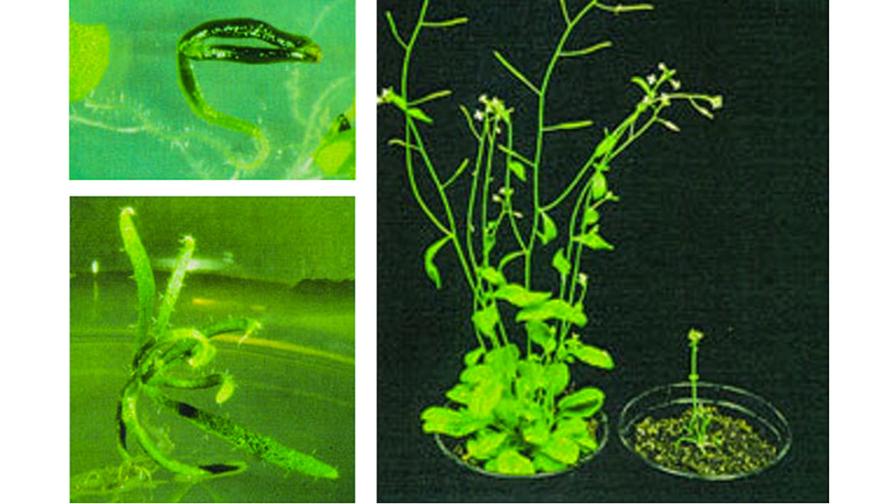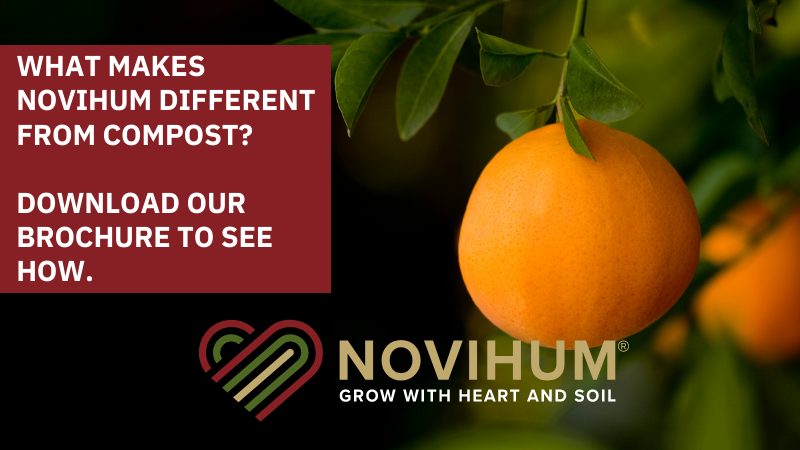How Science Is Helping Us Produce Better Pome Fruit

Phenotype of Arabidopsis mutant Argonaute (Ago) at various ages. (A) 11-day, (B) 35-day, and (C) 6-week (right) (the 6-week-old wild-type control is shown on the left). Adapted from Bohmert et al 1998, The EMBO Journal 17: 170-180.
The 2020 Nobel Prize in Chemistry was awarded to Drs. Emmanuelle Charpentier of the Max Planck Institute-Berlin and Jennifer Doudna of the University of California, Berkeley for their (2012) discovery of the genome editing system CRISPR/Cas (clustered regularly interspaced short palindromic (DNA) repeats /CRISPR associated-protein).
To date, the CRISPR/Cas system has become a platform dominating the arena of genome editing. It is not only used widely in genetic improvement of animals and plants but also tested extensively in gene therapy and other medical applications. There is no doubt that the CRISPR/Cas system will remain the primary platform in gene editing for many years to come.
The CRISPR/Cas system was developed from a bacterial defense system in which CRISPR serves as a molecular guide for protein CAS (a nuclease or a DNA-scissor) to cut and destroy invading DNA virus.
Lately, studies in the bacterial defense system have led to many discoveries of important implications. One of them is bacterial Argonaute proteins that could become a novel gene-editing system more useful than CRISPR/Cas. This novel gene-editing system could be a tremendous boon for fruit improvement.
What are Argonaute proteins?
Argonaute (Ago) proteins are a group of DNA- and/or RNA-guided nucleases capable of cleaving DNA and/or RNA with unique specificity.
Argonaute was first described in a study concerning a mutation in model plant Arabidopsis thaliana. Since the mutant leaves were exceptionally narrow and resembled the tentacles of a small squid (e.g., Argonauta argo), the mutation causal gene and protein were therefore named Argonaute (Ago).
Subsequent studies revealed that Ago-like proteins are found in both eukaryotes (human, animal, plant, and fungus) and prokaryotes (bacteria and archaebacteria), which are distinguished by the presence (eukaryotes) or absence (prokaryotes) of a nucleus in their cells. For convenience, Ago proteins in eukaryotic cells are called eAgos, while those in prokaryotic cells are named pAgos.
How are eAgo and pAgo proteins compared?
In eukaryotic cells, eAgo proteins function as an RNA-guided nuclease in a biological pathway called RNA interference (RNAi). RNA molecules, either the mRNA transcripts transcribed from host genome, or an invading RNA virus, are the targets of RNAi. Therefore, eAgo proteins are essential in regulating host cell gene expression and in fending off invading RNA virus.
In prokaryotic cells, pAgos are extremely diverse, although the RNAi pathway is missing. This has mystified the function of pAgos for a long time. However, multiple studies demonstrated recently that most pAgos are DNA or RNA-guided nucleases that cut DNA molecules (DNA interference or DNAi) with distinct specificity, which protects bacteria from invading
DNA virus.
Given how the RNA-guided Cas proteins were re-purposed into a revolutionary CRISRPR/Cas gene-editing tool, scientists have been giving much of their attention to pAgos to investigate if they could be re-tooled into a novel genome-editing system.
Excitingly, a latest study has shown that pAgo proteins could also be programed to target a pre-determined genomic site in bacterial cells (Kuzmenko et al 2020, Nature 587: 632-637), making it one step closer to developing it into another gene-editing system.
How are pAgo proteins and CRISPR/Cas compared?
Compared to CRISPR/Cas, pAgo proteins are unique at least in the following four aspects:
1. Smaller. pAgo proteins have about one-half of the size of Cas9, the most commonly used Cas protein in CRISPR/Cas. This makes it relatively easier for delivery of pAgo into cells.
2. DNA or RNA-guided. pAgo proteins mostly use single-stranded DNA or RNA as a guide for DNA targeting, while CRISPR/Cas uses an RNA guide.
3. Single-strand DNA cleavage. pAgo proteins usually cleave one DNA strand, different from Cas9 that is an innate double-strand DNA cutter. To make a double-strand break, pAgo proteins would require two DNA or RNA guides.
4. Not required for a PAM (protospacer adjacent motif of three nucleotides). CRISPR/Cas requires a PAM next to the target DNA sequence, making it somewhat restrictive in DNA targeting. The pAgo-based DNA cleavage does not require such a PAM site.
How long would it take to develop a pAgo-based gene-editing system and use it in fruit crops?
Although it still remains in an early stage in the development of the pAgo-based, gene-editing system, the novel system will be ready for use in fruit crops in a few years. This is particularly true if an RNA guide is used to guide pAgos as much knowledge about CRISPR/Cas is readily adaptable.
A potential major challenge would be off-target issues. However, given the ingenuity demonstrated in polishing the CRISPR/Cas system, a novel DNA or RNA guided gene-editing system based on pAgos will be made available sooner than many would expect.
The fruit industry will greatly benefit in the future due to the foreseeable applications of pAgo proteins in improvement of fruit quality, productivity, and disease resistance.










